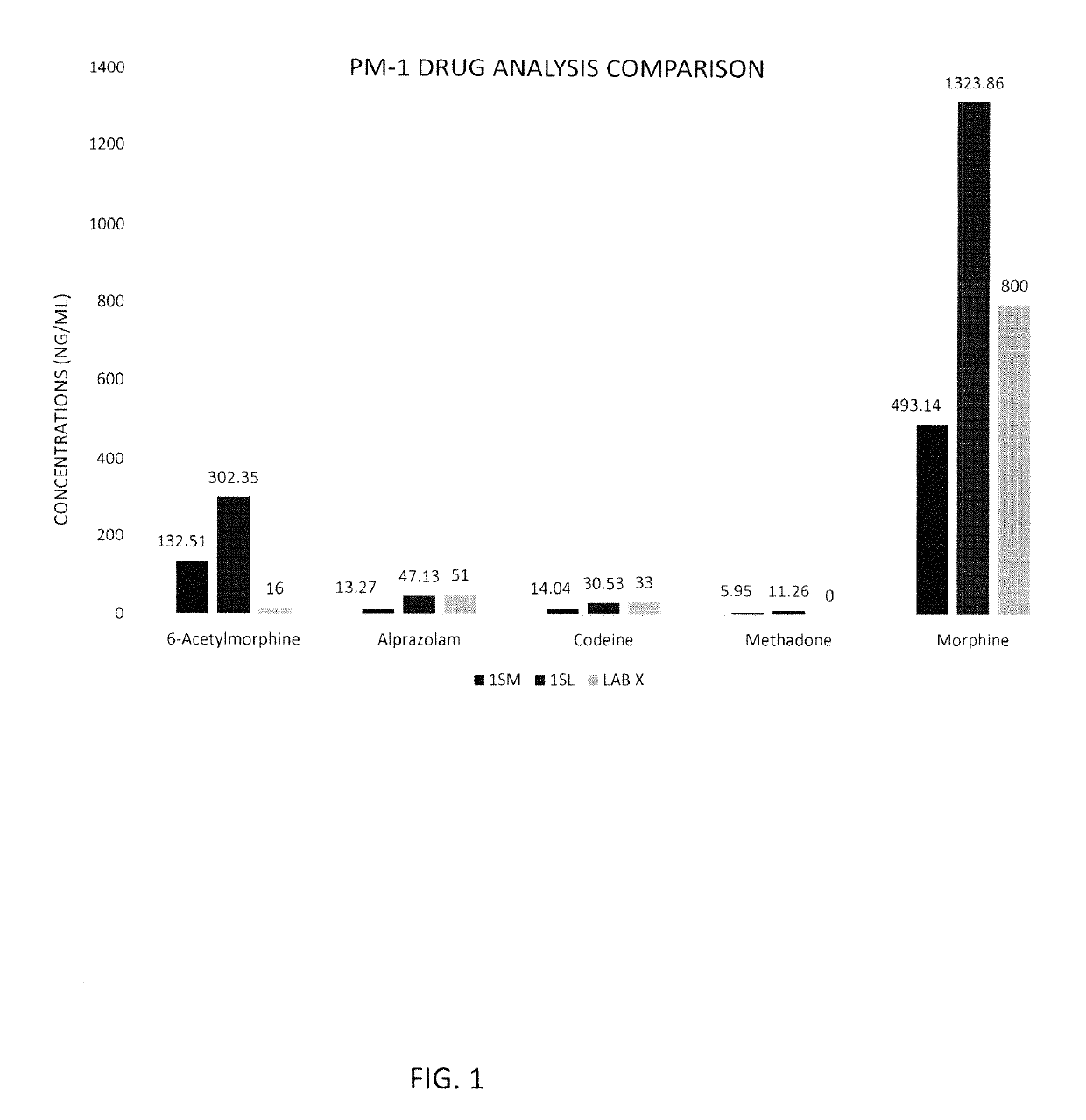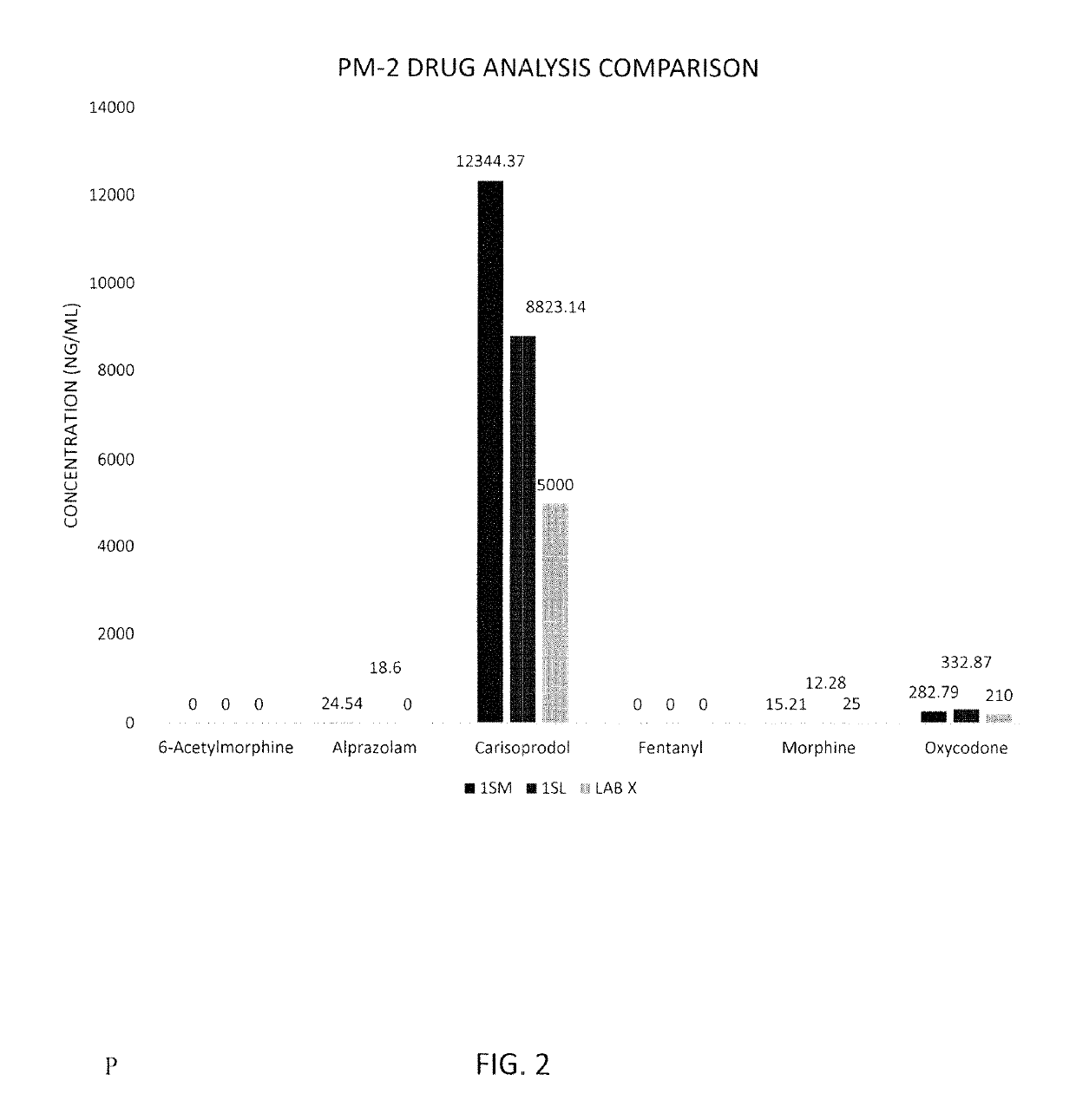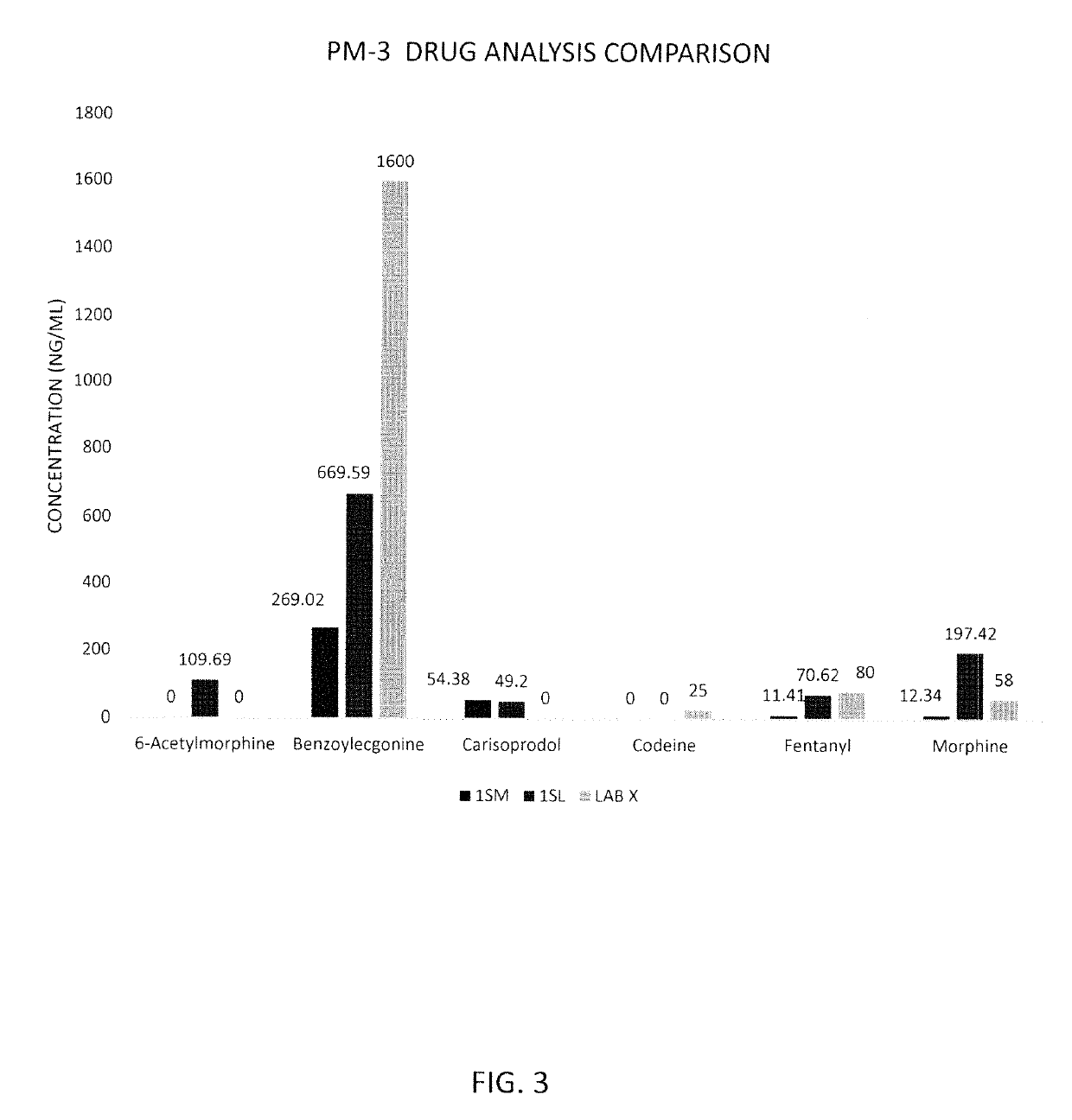Rapid and sensitive method of forensic toxicology in post-mortem subjects using oral fluid testing
a forensic toxicology and oral fluid technology, applied in the field of forensic toxicology in postmortem subjects, can solve the problems of unsuitable analysis, difficult to retrieve viable sample matrices, and inability to perform forensic toxicology, so as to achieve less invasive, sensitive, rapid, and sensitive results.
- Summary
- Abstract
- Description
- Claims
- Application Information
AI Technical Summary
Benefits of technology
Problems solved by technology
Method used
Image
Examples
example 1
d Collection from Sublingual Area
[0128]A cellulose collection pad from a Quantisal Saliva Collection Device was placed into the sublingual area adjacent to the second bicuspid and first molar in the buccal cavity of the decedent for approximately three to five minutes. The collection pad was removed and observed for saturation of the pad with oral fluid. The collection pad was placed into the collection device, containing a non-azide buffer. The coroner's ID for the subject, date, and sample location was written onto the collection device and placed into a dual-pocketed zippered biohazard bag. The collection device was placed into the zippered pocket of the bag and the chain of custody was folded and placed into the opposing pocket. All samples were placed into a United Parcel Services Laboratory (UPS) Pak and then shipped to the laboratory for analyses. Upon receipt in the laboratory, the sample was inspected for viability, sufficient quantity of oral fluid, and paperwork. The samp...
example 2
d Collection from Submandibular Gland
[0132]During the initial autopsy preparation procedure, an incision dissection was made to expose the submandibular gland of the decedent. An incision then was made in the gland and a cellulose collection pad from a Quantisal Saliva Collection Device was inserted into the gland for approximately five to ten minutes. The collection pad was removed and observed for saturation of the pad with oral fluid. The collection pad was placed into the collection device containing a non-azide buffer. The coroner's ID for the subject, date, and sample location was written onto the collection device and placed into a dual-pocketed zippered biohazard bag. The collection device was placed into the zippered pocket of the bag and the chain of custody was folded and placed into the opposing pocket. All samples were placed into a UPS Laboratory Pak and then shipped to the laboratory for analyses. Upon receipt into the laboratory, the sample was observed for viability...
PUM
| Property | Measurement | Unit |
|---|---|---|
| volume | aaaaa | aaaaa |
| volume | aaaaa | aaaaa |
| total volume | aaaaa | aaaaa |
Abstract
Description
Claims
Application Information
 Login to View More
Login to View More - R&D
- Intellectual Property
- Life Sciences
- Materials
- Tech Scout
- Unparalleled Data Quality
- Higher Quality Content
- 60% Fewer Hallucinations
Browse by: Latest US Patents, China's latest patents, Technical Efficacy Thesaurus, Application Domain, Technology Topic, Popular Technical Reports.
© 2025 PatSnap. All rights reserved.Legal|Privacy policy|Modern Slavery Act Transparency Statement|Sitemap|About US| Contact US: help@patsnap.com



